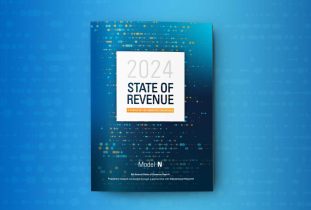Considerations When Entering into an Outcomes-Based Contract
Katie Hayes, Life Sciences Product Marketing, Model N & Nick Merryfield, CEO of Verpora
Your baby is beautiful—right? Aren’t all babies the apple in a parent’s eye? Of course they are, but to an independent onlooker, don’t some appear a bit prettier than others? “Possibly, and the same goes for pharmaceutical and biopharmaceutical products,” says Omar Ali, visiting lecturer in value-based pricing and Head of Payers for outcomes, and innovative contracting specialist at Verpora.
When payers look at a new product, they ask themselves, “Is this truly beautiful or not?” They want to know what additional attractiveness the innovation brings, both now and in the near-term. More importantly, they want to know the price they have to pay for these supposed advances. “These questions sit at the heart of a payer putting a value on innovation,” says Ali.
Like parents, manufacturers often struggle to view their “child” with independence. This is hardly surprising given the Tufts Center for the Study of Drug Development’s estimate that the development of a new drug ranges from $1.4 to $2.4 billion. The result is often a significant disparity between the value they place on a new technology and the price a payer is willing to pay. “Frequently, it feels like two people are looking at the same thing but from different ends of a telescope,” says Nick Merryfield, CEO of Verpora and Head of Business Consulting.
The issue is not just restricted to new medicines. As the U.S. becomes an increasingly managed market, an added complication emerges when three drugs in a class occur, compelling payers to trade them off against each other for formulary inclusion. “This is an issue the states have started to witness and one that will only continue to expand,” says Merryfield. Perhaps a once beautiful baby is no longer the prettiest in the class and a compromise must now be made.
Assessing Your Product
When either a disparity in value, or an increase in class competition is seen, one option to explore is the use of a value or outcomes-based, innovative contract (OBIC). While the implementation of published value-based agreements in the U.S. has doubled from 2015 to 2017, resistance to wide-scale rollout remains, with legal, regulatory, and operational challenges still restricting mass deployment.
“An OBIC is not suitable for every circumstance,” says Adam Meads, CTO for Verpora. “However, they can be immensely beneficial for the right products, in the right market, with the right payer. It is vital that manufacturers undertake a thorough market viability and drug value assessment before an OBIC journey is commenced. In simple terms, manufacturers need to honestly analyze, ‘how beautiful will payers view my drug compared to its peers, both now and over a thirty-six month time horizon?’”
This latter point can be difficult to assess internally, as what parent is going to voice their concern over the ugliness of their child? To do so is to admit that there may be struggles and no brand team wants to really hear that—especially before a launch. To overcome this, Ali recommends, “Senior leadership needs a culture where they can hear both the negative and positive feedback of the strength of the drug for the payer value proposition. Fostering a culture of transparency and establishing regular feedback from customer-facing roles, such as account directors, can produce an honest perspective of the product. The more they can listen and take feedback from those individuals, the better they are.”
Moreover, Ali states, “In the initial stage of developing an OBIC, you have to find a way to assess the drug through the payer’s eyes and work through what their barriers, hooks, and drivers are going to be. This allows you to set an appropriate OBIC negotiation strategy.” To understand the payer’s perspective, one option is to use in-country payers, either active or retired. “Unfortunately, using active U.S. payers at an early stage means revealing your hand before a strategy is thought through. U.S. payers do need to be brought into the development process, but later on, when the proposition is more defined. The payer world is a relatively small community and the problem with both active and retired payers is the potential for leakage,” warns Ali.
Another option within the early assessment stage is to look outside of the U.S. Unlike physicians, payers think and behave almost identically on a global basis. This gives manufacturers an opportunity to use truly independent payer psychology to assess the challenges they may face, leverage insights that have already been learned elsewhere, and theoretically test concepts which may be applicable to the U.S. payer community.
External consultants, such as through the expertise of Verpora, can also help shape your perspective. For example, Verpora can independently scrutinize the product through the use of internal payer teams to identify limiting success factors to a value-based agreement.
Risk & Reward
Often, the confidence a manufacturer has to apply a value-based agreement to a product depends on its market differentiation. For example, if the product is in a very busy market class with low product differentiation, there may be little to lose by entering into an OBIC. On the other hand, a brand new oncology innovation that may be first-in-class with excellent outcomes data and at a premium price might require other drivers to enter into such an agreement. “Depending on where your drug is in the cycle, there may only be upsides,” says Merryfield.
Though U.S. payers and manufacturers are more recently getting involved with value-based agreements, the European Union has been entering into such contracts for well over a decade. The evidence published in Europe suggests minimal downsides for manufacturers. In particular, a study conducted in the most prolific market for value-based agreements, Italy, highlighted that within a six-year period to 2012, only 3.3%, or €121 million of the potential money available for refund, which was €3696 million, under OBIC was actually paid back.
“Don’t forget value-based agreements only pay out when the drugs don’t work,” concludes Ali. “On the surface, the fact that only 3.3% of the potential rebate was reimbursed is a great sign and should give confidence for U.S. manufacturers to keep exploring outcomes-based contracts.”
Find Omar Ali and Nick Merryfield at the Commercial Pricing and Innovation Forum, June 12-14 in Stresa, Lake Maggiore, Italy, where they will expand on the topic in a presentation and panel. To find out more about the differences and similarities of OBIC between the U.S. and the rest of the world, please join us in Stresa.
About Verpora
Founded by experienced payers, data scientists, and industry experts, Verpora provides the inside track to creating and deploying successful risk-share, outcomes-based, innovative contracts (OBICs). Targeted on the rapidly changing U.S. payer landscape, Verpora’s approach implements practices from mature managed markets to help clients demonstrate value, secure market access, and deliver improved outcomes to patients plus payers.
Sources: HFMA Survey, ISPOR, Verpora Group
















